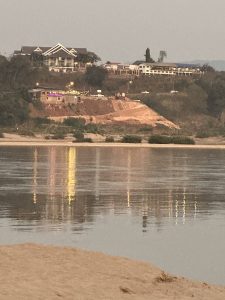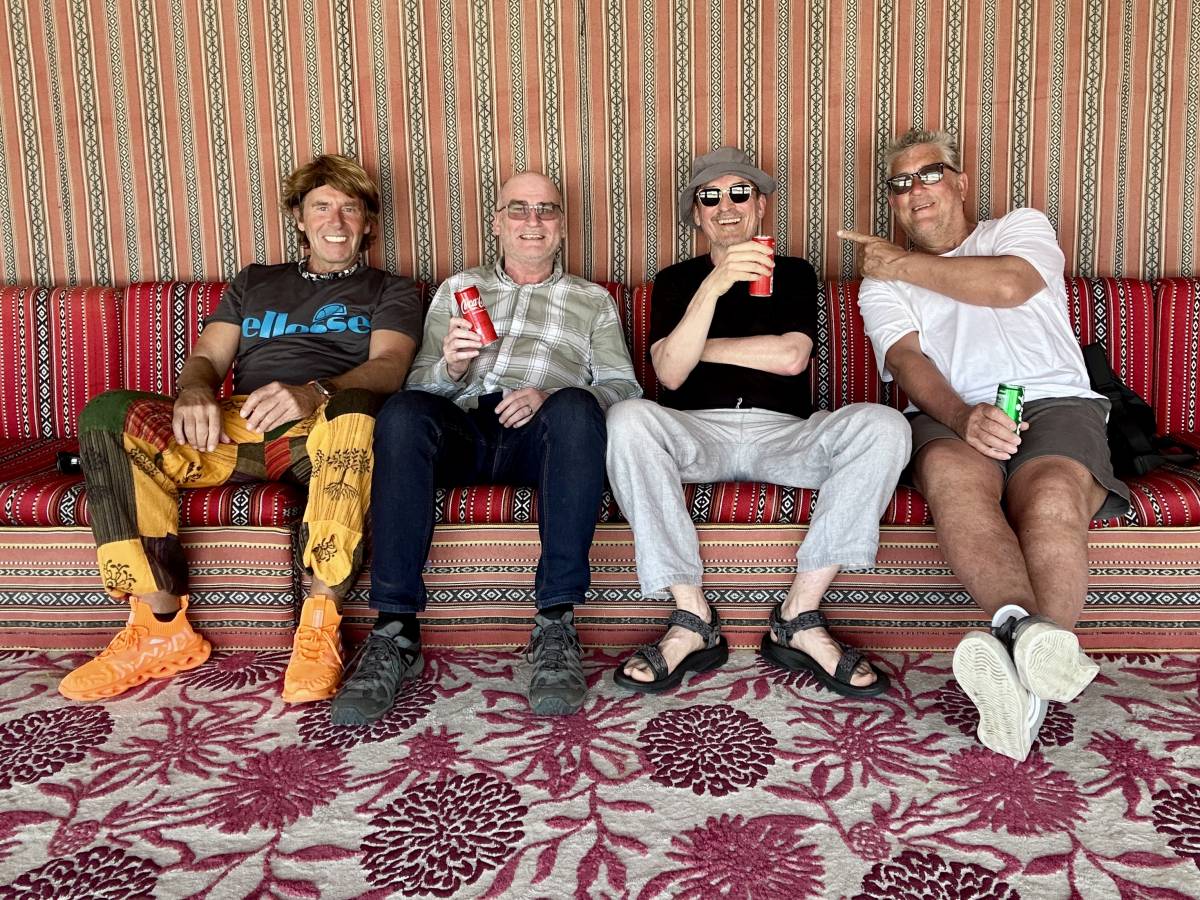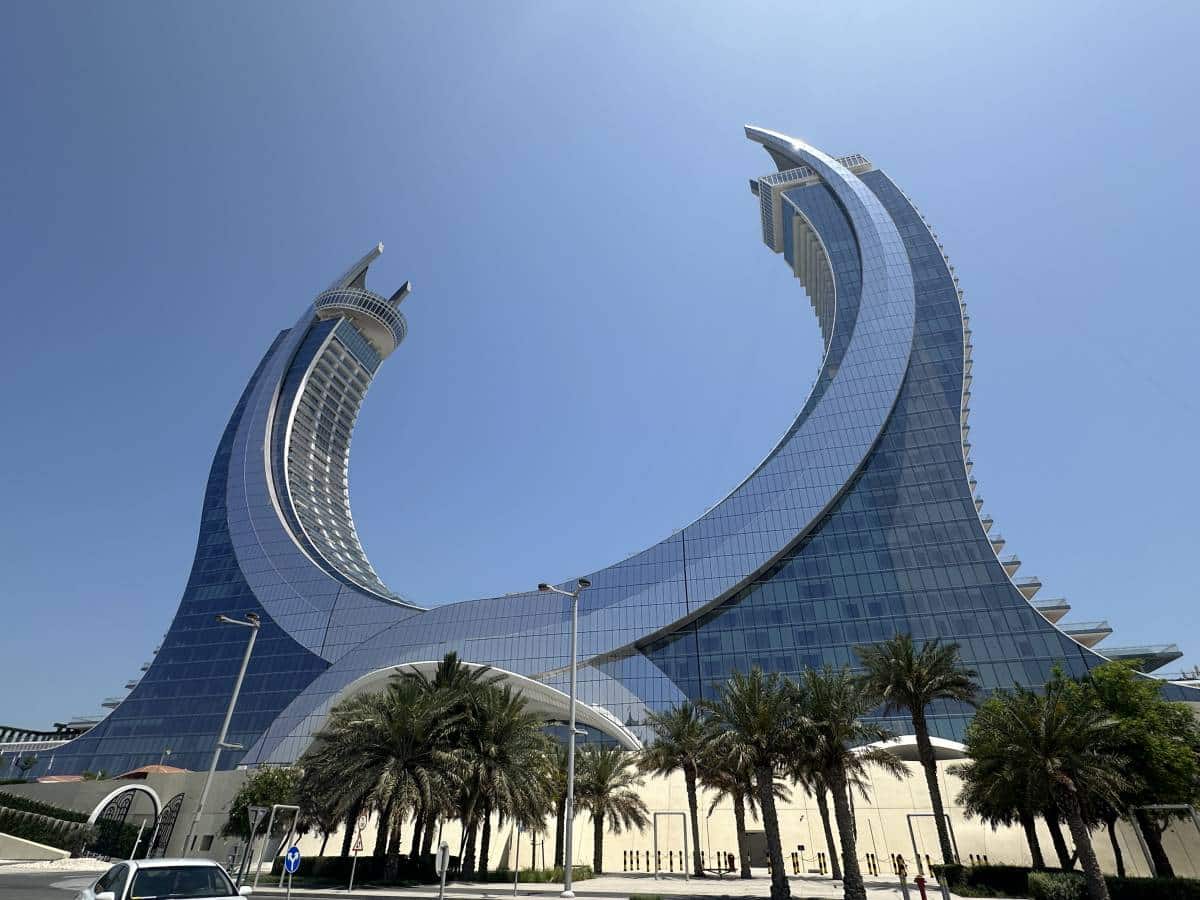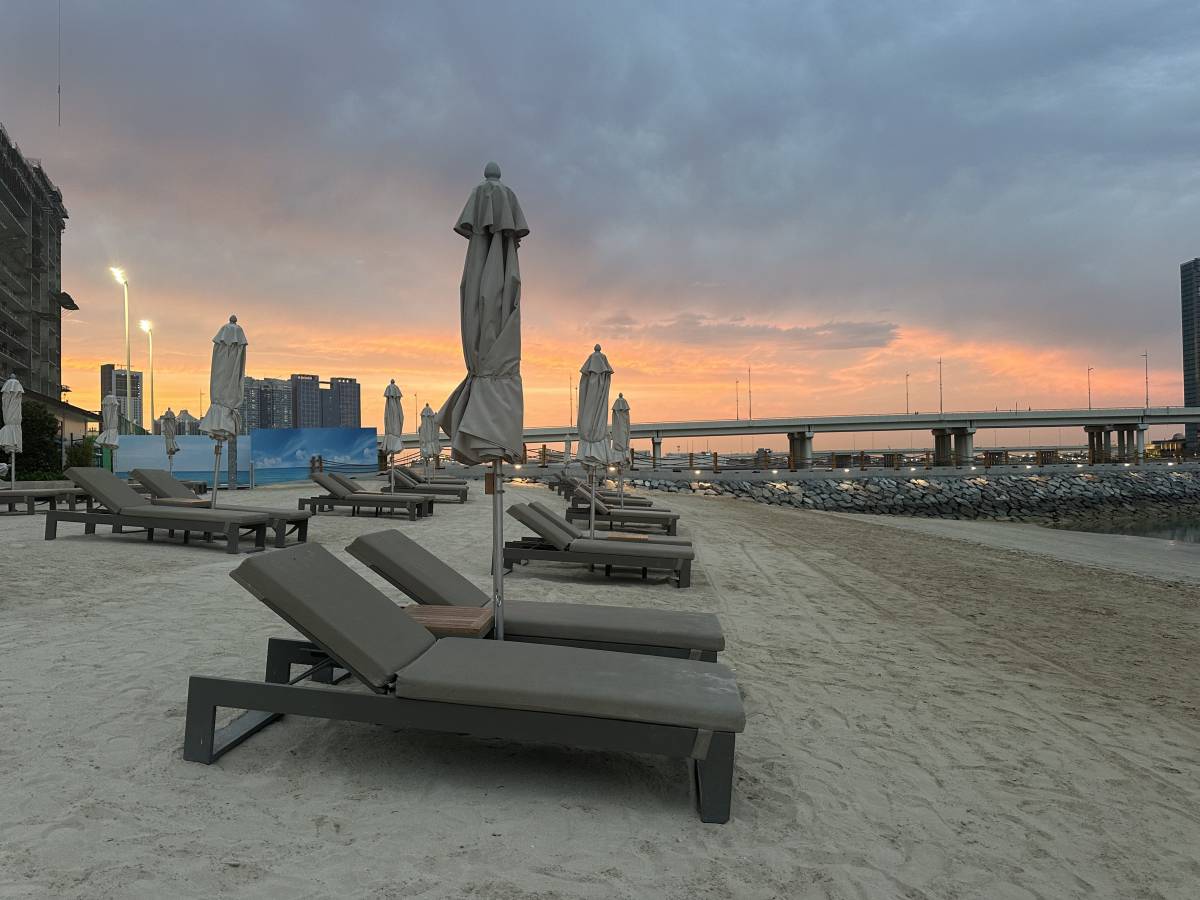UAE - Abu Dhabi, Dubai, Sharjah, Ajman Our third stop was Sir Bani Yas Island…
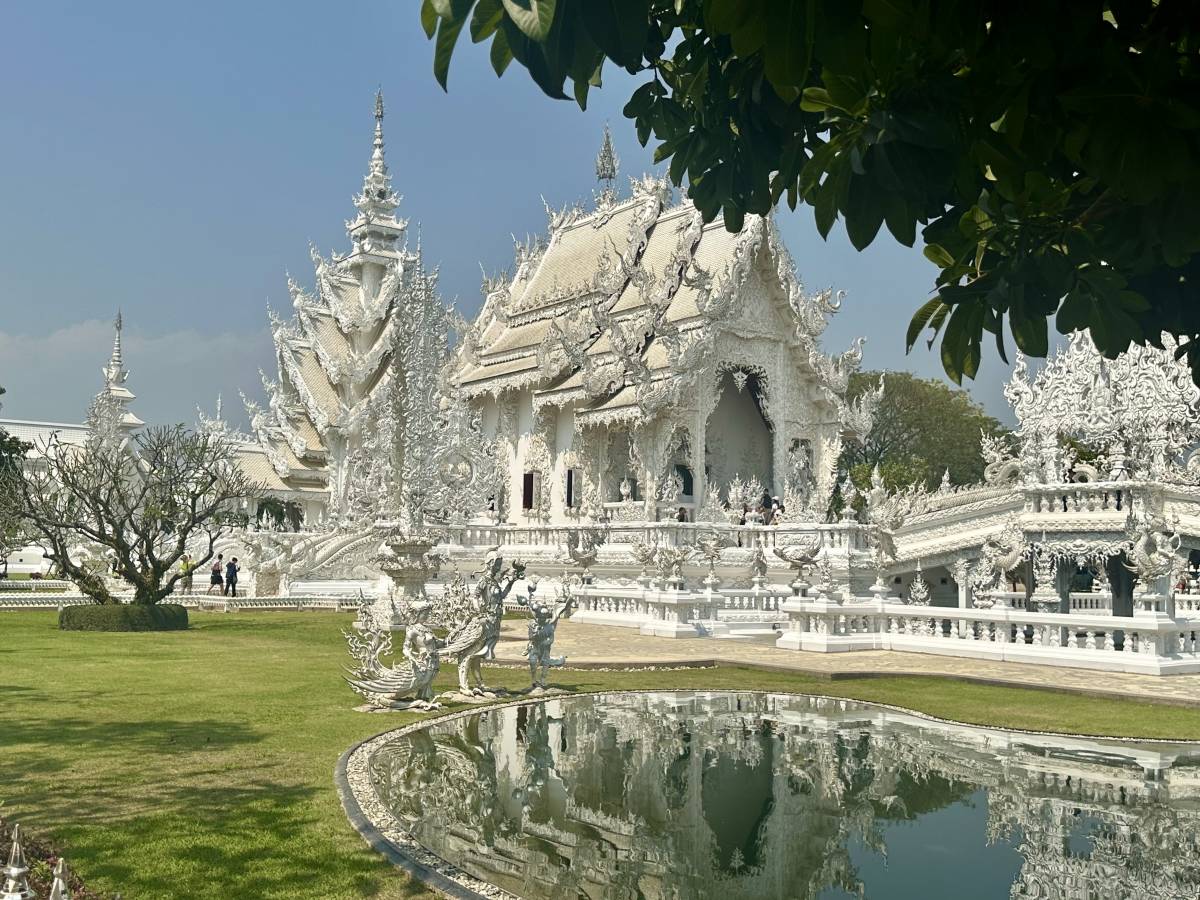
Bangkok to Laos
I’d paid for fast track through the airport because the lines at Suvarnabhumi can be somewhat challenging for my patience levels. Rinda was waiting with my name on a board. That’s not me making fun of the way Asians pronounce Linda. Her name was actually Rinda. It was a seamless process and I was on my way in no time.
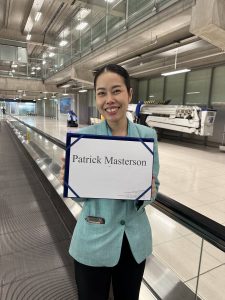
The following morning I was on a mission to replenish my speedo collection. I was unsuccessful, but I did clock up an obscene number of steps walking the streets and passing some high end shops. Louis V and Dior were particularly impressive. Back at the hotel I had the rooftop pool to myself for a few hours before going to meet the group at a different hotel. The group hotel was located in Chinatown which is an area of Bangkok I’d not investigated before.
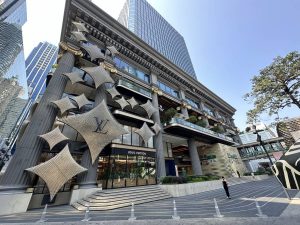
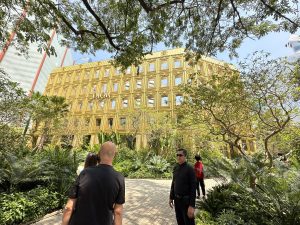
When I checked in there was a sign prohibiting “durian” in the room. Eating this pungent fruit carried a 2,500 baht fine – about £60. Durian is the most controversial and divisive fruit in the world. If Donald was a fruit, he’d be durian. Highly nutritious, but it stinks. Comparisons range from sewage, to “scent of skunk”, to rotten eggs. It’s banned on aeroplanes, in hotel rooms, and many other public places. It’s an olfactory menace.
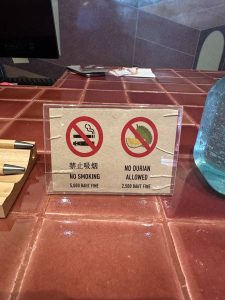
I walked in to the orientation meeting late, (I’d got a bit lost in the fire escape stairwell), and it was like walking in to a dentist’s waiting room. 16 people in the group which is a bit too many for my liking. Three Americans, six Aussies, six Brits and a Kiwi. Our guide was called Na and her English was a little tricky to decipher.
After the meeting I branched out and found an Italian restaurant. No mean feat in Chinatown. On the way back to the hotel I walked past a family sitting in the street watching Leicester vs. Arsenal. I sat and watched, (with Thai commentary). The man of the house was wearing a Liverpool shirt. We bonded.
The next morning I took my usual stroll and was amazed how many Chinese people were up at 5am. After breakfast there was an organised group tour of some of their main sights of Bangkok, but I’d seen them all before so I did my own disorganised tour. Aimless wandering has its advantages and it wasn’t long before I was rewarded by stumbling across the memorial for King Rama I. Rama one is considered the first king of Siam. He was born in 1737 and became king at the age of 45. He had 21 sons and 21 daughters and an exhausted wife. “The King and I” was based upon Rama IV.
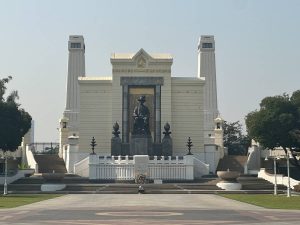
Then it was across a bridge toward a temple complex. Inside was some kind of ceremony for a newly ordained Buddhist monk. His uncle told me that the young monk was 27 and that all the well-wishers were family and friends. And me. A week ago I was learning about Sikhism and how they mustn’t cut their hair because it’s a gift from God, and here I was in the presence of Buddhist monks who shave all their hair off. At least one of them has got it completely wrong, maybe both.
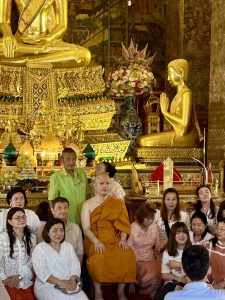
My meandering continued and I found the Dragon Temple which is the largest Chinese Buddhist temple in Bangkok. Local people were making offerings in the form of groceries.

My final discovery before arriving back at the hotel was the Kwong Siew Association of Thailand. The Kwong Siew are a people from certain regions of China, and it would appear that they have an association in Thailand.
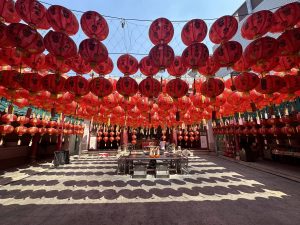
Late afternoon we left for the train station. The overnight train experience from Bangkok to Chang Mai was a world apart from the Indian trauma train. Much more civilised despite having to share the carriage with 40 Canadian high school kids.
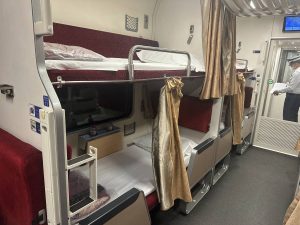
After the 13 hour ride I was the second person to wake in our carriage. There was a Canadian teenager who had thrown up during the night and was looking very sorry for himself. I brought him a dozen paper towels which is where my assistance stopped. I left him to the clean up job before his classmates woke.
We arrived at around 7 am at Chang Mai train station and headed a mile to our hotel. Chang Mai is the largest city in Northern Thailand with 115,000 people. It’s a popular tourist spot and sits on the River Ping.
After dumping our bags and having a hotel breakfast for £2, we headed up the hill to see the Doi Suthep Temple. There were 321 steps to reach the top and we were rewarded with some magnificent temple viewing.
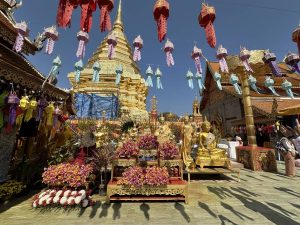
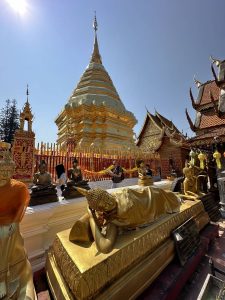
I abandoned the group in the evening and headed to the night market. It wasn’t long before I was seduced into a 30 minute foot massage for a fiver. There was a great deal going on and it was an easy way to spend a few hours. Within the hour I was once again coerced into a massage – this time a back and neck massage, fully clothed. She was about 5 ft tall and tiny, but could have killed me with her bare hands.
Tuesday was a free day with optional activities – cooking or cycling. There was a clear choice for me, and six of us headed off for some mild pedalling. English Tanya fell off within about 100 metres, but managed to stay on for the rest of the 22 kilometres. We saw some great sights on the outskirts of the city. Temples, ruins, more temples, and then a sticky rice field. We had two great guides with us who made the trip hugely enjoyable. I decided to walk four miles back to the hotel – the cycling was on flat terrain and hadn’t quite been enough exercise.
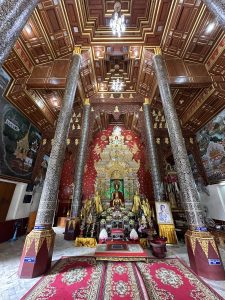

On Wednesday we drove north to Chiang Khong via Chang Rai. The roads were excellent and the scenery even better. At lunchtime we reached the White Temple which blew me away. Known locally as Wat Rong Khun, I’d never heard of it, but visually it rivalled the Taj Mahal. Built only 27 years ago by Thailand’s answer to Salvador Dali, Chalermchai Kositpipat, it was magnificent. It looked like a winter wonderland. Some of his art was rather interesting too.
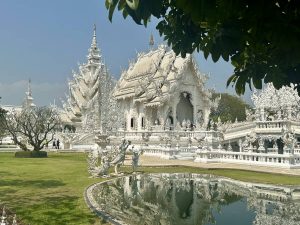
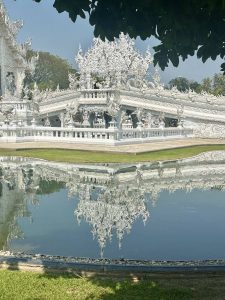
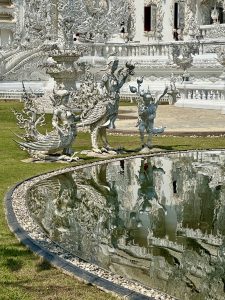
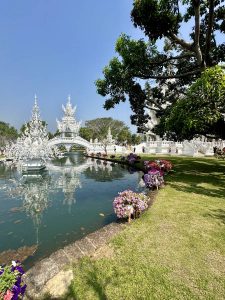
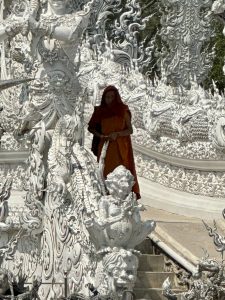
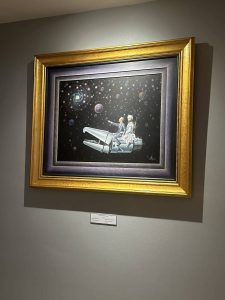
By late afternoon we’d reached our hotel which was situated on the banks of the Mekong River. The Thailand/ Laos border is 1800 km long and the Mekong River forms half of it. We could see Laos across the river. I paddled in the river whilst the others went on a village walk. Next stop, Laos.
